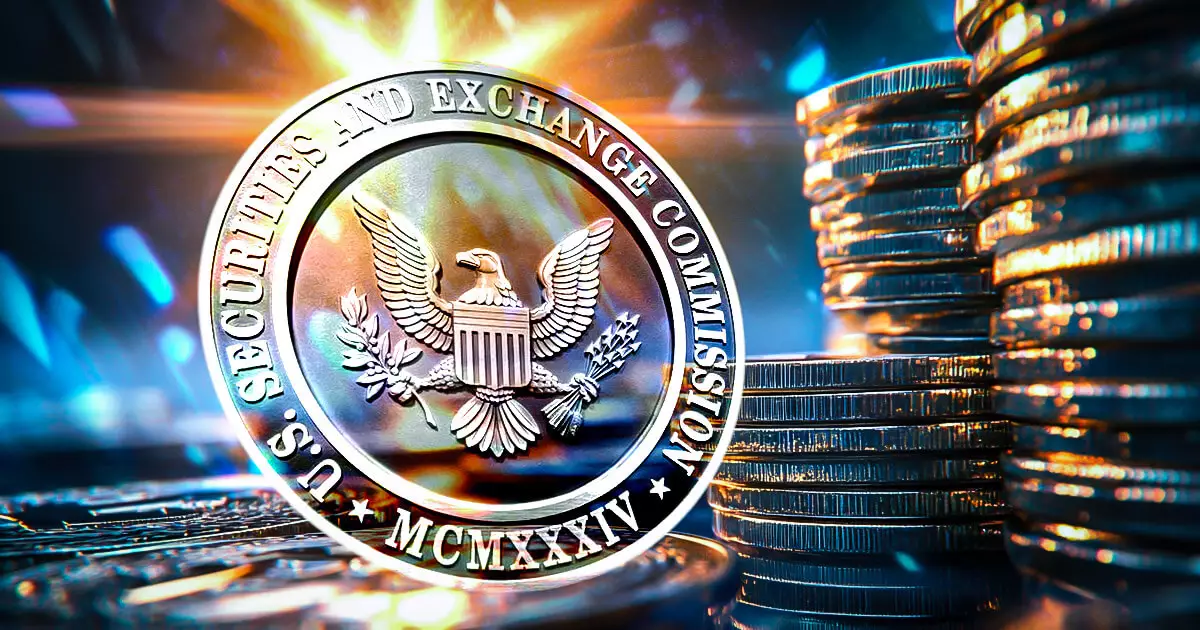The dynamic world of cryptocurrency continues to spark debate, especially in light of evolving regulatory frameworks. Recent discussions between the US Securities and Exchange Commission (SEC) and industry leaders about the inclusion of staking in crypto exchange-traded products (ETPs) highlight the intersection of innovation, investor protection, and regulatory oversight. This article dives into these critical discussions, emphasizing the implications for both the market and future regulatory stances.
Staking plays a pivotal role in various blockchain networks, particularly those operating under the proof-of-stake (PoS) consensus mechanism, like Ethereum (ETH) and Solana (SOL). By allowing validators to lock their native currencies to secure the network, staking not only bolsters network security but also provides a mechanism for users to earn transaction fees and newly minted tokens. Thus, its exclusion from ETP structures raises pertinent questions regarding investor access and the full potential of these PoS-based assets.
Industry advocates, including representatives from Jito Labs and Multicoin Capital, argue that without mechanisms like staking integrated into ETPs, investors miss out on significant returns. Moreover, they contend that such exclusion diminishes the overall security of blockchain networks, as stakeholder investment in these networks is integral to their functioning and vitality.
The SEC has approached the idea of facilitating staking within ETPs with caution. Key concerns revolve around potential disruptions to the standard transaction settlement cycle, taxation implications of staking rewards, and whether staking services could be classified as securities offerings. Past instances, such as the SEC’s request for removal of staking components in earlier Ethereum ETP applications, illustrate the regulatory body’s stringent stance.
However, the meeting on February 5 revealed a proactive approach by industry representatives to address these concerns. They proposed two innovative models designed to integrate staking into ETPs while accommodating regulatory demands. This collaborative spirit exhibits the industry’s recognition of regulatory authority and the necessity for compliance in its growth.
The two primary models presented aim to balance investor benefit and regulatory concerns.
1. **The Services Model**: This model permits a portion of assets within the ETP to be staked through validated third-party service providers. The key advantage here is that it allows a structured form of staking without compromising timely redemption for investors. By only a fraction of assets being staked at any time, it ensures liquidity while contributing to the network’s security.
2. **The Liquid Staking Token Model**: This innovative approach allows ETPs to hold liquid staking tokens (LSTs) that represent the staked assets. In essence, an ETP could contain these tokens instead of directly engaging in staking, thereby avoiding direct implications on redemption timing. In the case of Solana, utilizing derivatives like JitoSOL exemplifies this model’s efficiency.
These proposed solutions not only address concerns about liquidity and settlement cycles but also pave the way for a more secure and productive investor experience.
Despite the SEC’s historical hesitance towards integrating staking in crypto ETPs, recent regulatory changes signal a potential shift. With pro-crypto figures like Commissioner Mark Uyeda taking leadership roles, the SEC appears to be recalibrating its approach to cryptocurrencies. The establishment of a dedicated Crypto Task Force, led by Commissioner Hester Peirce, indicates an openness to developing a regulatory framework that could accommodate innovations like staking in ETPs.
Moreover, as institutional interest in cryptocurrency products rises, the SEC’s deliberations gain further importance. Tools such as spot Bitcoin Options are also under review, meaning that the crypto market’s shape is in flux.
The conversations surrounding staking in cryptocurrency ETPs reveal a critical juncture for both regulators and the industry as a whole. The industry’s willingness to collaborate and innovate in response to regulatory concerns suggests that a mutual path forward is achievable. While concrete regulatory approvals are still pending, the landscape appears ripe for potential changes that could benefit both investors and the cryptocurrency ecosystem overall. As we move forward, maintaining a dialogue between industry stakeholders and regulatory bodies will be essential in shaping a sustainable and secure future for cryptocurrency investments.















Leave a Reply